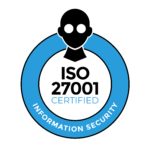NERC audit compliance is mandatory for organizations that own, operate, or use facilities within the North American bulk power system (BPS). Its purpose: ensure the reliability and security of critical electric infrastructure. With increasing threats—both cyber and physical—the standard has wide-reaching implications for utilities, transmission operators, and other grid contributors.
Why it matters: Failure to comply can result in regulatory penalties—up to $1 million per day per violation in the U.S.—as well as increased operational risk. Compliance isn’t just about avoiding fines; it’s about safeguarding grid reliability in a time of accelerating change.
What it is
The NERC Critical Infrastructure Protection (CIP) standards are overseen by the North American Electric Reliability Corporation (NERC), which operates under the authority of the U.S. Federal Energy Regulatory Commission (FERC) and Canadian provincial regulators. The standards are created to protect the reliability and security of the BPS across North America.
The CIP program specifically focuses on cybersecurity and physical security for systems critical to grid functions. As part of the broader NERC Reliability Standards family, CIP targets the systems, processes, and personnel that pose potential risks to the operational stability of electric transmission and distribution systems.
Core requirements or principles
The CIP standards are structured around specific control areas, each addressing distinct security domains. Entities must implement applicable controls based on asset classifications.
Asset categorization (CIP‑002): Identify and classify BES Cyber Systems by impact—High, Medium, Low—driving control applicability.
Governance and accountability (CIP‑003): Enforce organizational policies and processes under the oversight of a designated CIP Senior Manager.
Personnel security (CIP‑004): Require background checks, training programs, and formal authorization for system access.
Electronic security perimeters (CIP‑005): Control access through firewall segmentation and secure remote connections.
Physical protection (CIP‑006): Secure physical areas that house BES Cyber Systems to prevent unauthorized access.
System management (CIP‑007): Address patch management, malware protection, systems logging, and access accounts.
Incident response (CIP‑008): Prepare for and report security incidents per structured thresholds and timelines.
Recovery planning (CIP‑009): Develop and regularly test restoration capabilities for BES Cyber Systems.
Change and vulnerability management (CIP‑010): Govern configuration changes and perform regular vulnerability assessments.
Information protection (CIP‑011): Safeguard sensitive operational information from unauthorized disclosure.
Communication security (CIP‑012): Protect inter-control-center communications to ensure confidentiality and integrity.
Supply chain risk management (CIP‑013): Evaluate and mitigate risks from vendors and procurement practices.
Physical risk assessment (CIP‑014): Analyze and secure critical physical infrastructure through third-party-verified plans.
Internal network monitoring (CIP‑015): Monitor High- and Medium-impact networks for malicious activity—recently formalized as a compliance requirement.
Types or categories
Impact-based classification defines how deeply a standard applies to each entity:
High, Medium, and Low impact BES Cyber Systems: Based on asset function, size, and importance to the grid. For example, control centers managing major transmission paths are typically categorized as High impact.
Low impact asset requirements: While less intensive, these still require documented policies and foundational controls per CIP‑003.
Connectivity-based variations: Some standards apply only if assets have external routable connectivity (ERC), further segmenting control applicability.
Understanding your asset impact level is fundamental—this classification shapes your entire compliance strategy.
Compliance process
Executing a NERC CIP compliance program requires a structured, multi-phase approach grounded in clear governance and continuous improvement.
Register with NERC: Entities performing qualifying reliability functions (per Appendix 5B) register with their Regional Entity.
Certification (when required): New Reliability Coordinators (RC), Balancing Authorities (BA), or Transmission Operators (TOP) must complete certification within nine months of application acceptance.
Compliance monitoring: Regional Entities conduct audits based on each organization’s risk profile, including Inherent Risk Assessments and tailored Compliance Oversight Plans.
Use compliance platforms: Align and the Secure Evidence Locker (SEL) are NERC’s centralized data systems for submitting evidence and managing compliance activities.
Reporting incidents: Under CIP‑008, qualifying incidents must be reported to the E-ISAC and ICS-CERT/NCCIC. Timeliness and accuracy are critical.
Penalties and enforcement: FERC may levy daily penalties for non-compliance. Willful or systemic violations can result in major financial repercussions.
Common challenges
Failure in compliance programs often stems from misclassification, process gaps, or lack of internal resources. Common pitfalls include:
Incomplete asset inventories: Without an accurate picture of cyber systems—including electronic access control and monitoring systems (EACMS) or protected cyber assets (PCAs)—impact ratings can be missed or misjudged.
Inconsistent low-impact implementation: The ERO has flagged weak governance and minimal controls in Low impact programs as a recurring risk.
Skill gaps and resource shortages: Many utilities struggle to recruit and retain personnel with experience in operational technology, cybersecurity, and regulatory compliance.
Remote access controls: Implementing and managing secure, monitored remote access is a frequent pain point, especially under CIP‑005.
Supply chain complexity: CIP‑013 requires robust vendor risk management, but many organizations lack visibility or standard procedures for evaluating suppliers.
Compliance isn’t static—entities must maintain vigilance and adapt as threats evolve.
Benefits of compliance
Done right, NERC CIP compliance delivers more than regulatory peace of mind.
Improved operational resilience: Implementing structured controls hardens systems against cyberattacks and physical threats.
Faster response and recovery: With response plans, detection systems, and tested recovery protocols in place, time to recovery is shorter—and more predictable.
Regulatory credibility: A strong audit history builds trust with regulators, enabling smoother interactions and lower oversight burdens.
Market eligibility: Participation in certain power markets or interconnection regions may require demonstrated compliance with NERC standards.
Information sharing: Through E-ISAC membership, compliant entities gain alerts and insights from industry-wide threat intelligence, improving situational awareness.
Who needs it and when
NERC CIP applies to registered entities performing functions critical to grid operations.
Mandatory for registered entities: If your organization owns, operates, or connects to power facilities that fall under the BES scope—and performs a qualifying function—you are subject to NERC CIP requirements.
Scope includes system operators, transmission owners, and generators: Functions covered include Balancing Authorities, Generator Owners/Operators, Transmission Owners/Operators, Reliability Coordinators, and more.
Trigger events include system changes: New facilities or functional changes, such as becoming a certified RC, BA, or TOP, can initiate new compliance obligations and require certification efforts.
Preparation tips
Strong compliance programs begin with organizational readiness and accurate scoping.
Establish governance early: Designate a qualified CIP Senior Manager. Develop and publish enterprise-wide CIP policies aligned with your asset footprint and impact levels.
Inventory and classify assets: Build a complete, current list of BES Cyber Systems and perform detailed impact categorization under CIP‑002. Include EACMS, PACS, and PCAs, and document connectivity status.
Harden perimeters: Architect electronic security perimeters and validate remote access pathways (CIP‑005). Implement physical barriers, monitoring, and access logging under CIP‑006.
Prioritize system hygiene: Automate patching programs where possible, require regular vulnerability assessments (CIP‑010), and monitor system logs (CIP‑007).
Develop vendor controls: Formalize your procurement and contract review processes to address vendor risk under CIP‑013.
Prepare for the latest standards: Implement internal network security monitoring (CIP‑015) and ensure encrypted, monitored links between control centers (CIP‑012).
Train, test, and document: Exercise incident response and recovery plans (CIP‑008/009). Maintain testing records and ensure reporting workflows meet regulatory timelines.
Centralize evidence: Use NERC tools like Align and SEL to maintain audit readiness. Understand when and how to apply for Technical Feasibility Exceptions (TFEs) under NERC guidelines.
Conclusion
NERC CIP compliance is a critical, enforceable obligation that protects grid security and enhances operational resilience. With evolving standards, increasing cyber threats, and growing grid interdependence, staying audit-ready is both a regulatory requirement and a business necessity.
Organizations that begin early, clearly define their system scope, and embed compliance into day-to-day operations are best positioned for success. As standards advance and enforcement tightens, having a mature NERC compliance program isn’t optional—it’s foundational.

Related Posts
Stay connected
Subscribe to receive new blog articles and updates from Thoropass in your inbox.
Want to join our team?
Help Thoropass ensure that compliance never gets in the way of innovation.












.png)